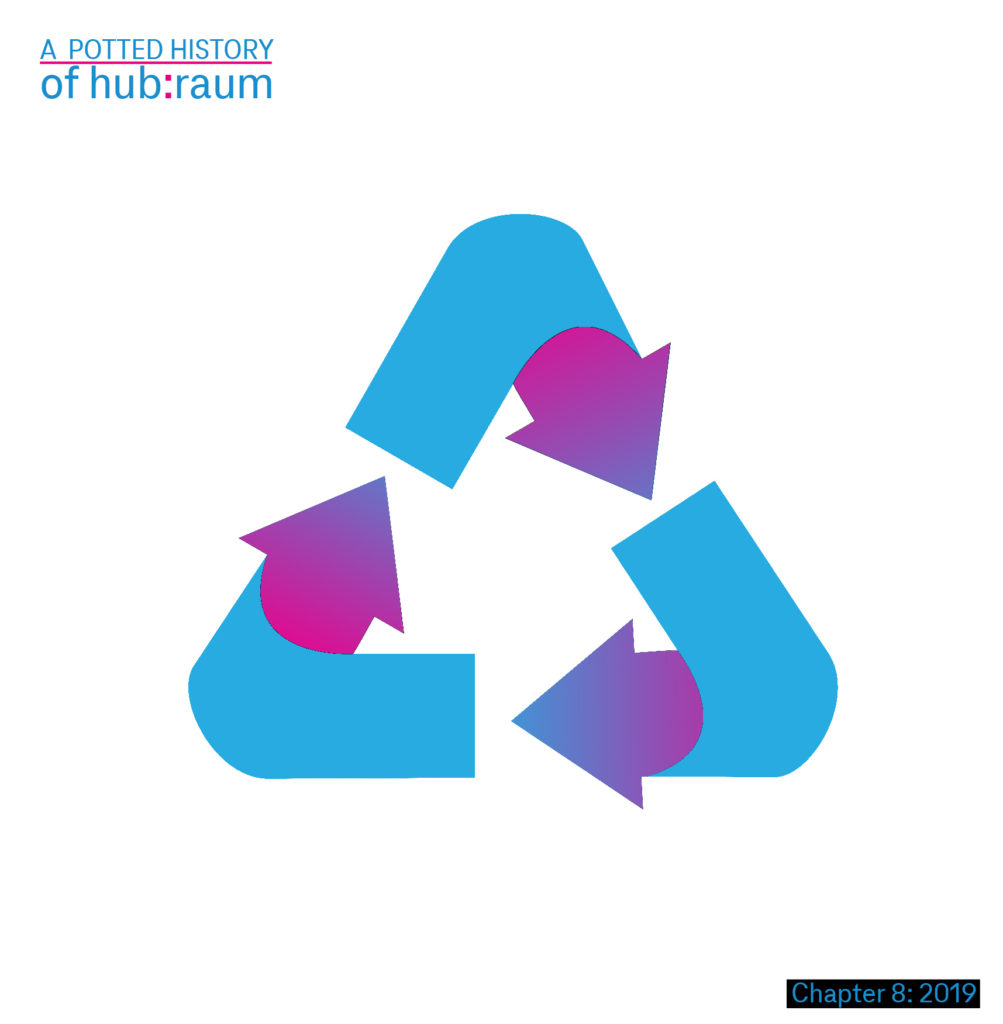What you’ll learn from reading this:
- How hubraum came to combine 5G with sustainability
- Why a big solution to the climate emergency consists of lots of tiny steps
- How technology and innovation is contributing to Deutsche Telekom’s climate targets

What you’ll learn from reading this:
This May marked ten years of hubraum! To celebrate the occasion, we’re compiling a potted history: the milestones that defined hubraum, year by year.
In 2019, hubraum introduced their 5G sustainability award which later became the Network Sustainability Award. As we all know, there’s no Plan(et) B — so every last effort towards fighting the climate crisis is crucial. So what innovative environmental measures did the award highlight? And what other plans do we have in the pipeline for preserving our planet? We dug deeper in conversation with Laurita Mora, who first came up with the idea for the award and Rita Tasnadi, who leads the Innovation Program for Energy Efficient and Sustainable Networks at Deutsche Telekom.
Laurita: We developed this idea as, at this time, 5G and also climate change dominated the news agenda. Plus, Greta Thunberg and the Fridays for Future movement raised public awareness of the issue. This focus on sustainability has only built in the years that followed us founding the award.
hubraum wanted to combine the topics of 5G and environmental awareness in order to make this essential new technology more sustainable.

Laurita: Anyone in a startup or any individual working on a project dedicated to 5G and sustainability could apply. Obviously, a focus on 5G and its impact on sustainability were the most important criteria.
Besides this, we also looked at how creative the concept was and how practical the idea was. We also considered how well it was implemented technically and, last but not least, the quality of the visualization and presentation. We received 79 applications, and we shortlisted 11 candidates!
Rita: These shortlisted candidates were asked to pitch their ideas to the jury. Following the announcement of the winners, the startups got unique access to Deutsche Telekom networks, platforms, data and knowledge to create a paid proof-of-concept, together with Deutsche Telekom, to continue to develop their projects.
The first year we held the award, MOWEA and Nano were our two winners. MOWEA produces these amazing small modular wind turbines. These are designed to be attached to existing structures and which generate energy renewably. Nano had developed an app to gamify sustainability with a challenge to reduce C02 emissions.
Laurita: In that first year, we ran a trial with Nano. Prior to running the trial, hubraum’s sustainability topic team worked together with the wonderful Nano team. Together, they adapted the challenge to make it appropriate for a European audience (after all, aspects like how we handle recycling are a bit different over here). This was a really fun collaboration. The trial involved an employee challenge where employees were tasked with using it to measure (and reduce!) their CO2 footprint.

Rita: Beside the opportunity to trial out the idea with us, and establish sustainable partnerships, we also gave the winners the chance to present their solutions in front of international investors during an e-pitch with Solar Impulse Foundation.
Laurita: The award also took place the year after that with a focus on network sustainability — we look forward to building on the award’s success next year with a new edition!
Rita: As in many cases: the big solution ultimately consists of many small steps. There are no silver bullets, sadly. These small steps become apparent when you take a close look at the network infrastructure. Here tTechnology can help you find potential energy saving options to counteract and optimize energy consumption, combined with intelligent management futures and energy-efficient methods. Another possibility is to plan and deploy renewable energies for radio sites while optimizing power supply and demand. We need to walk this path together, as an industry, and learn from one another to shape the ecosystem.
These are the areas we are focusing on in the Innovation Program for Energy Efficient and Sustainable Networks at Deutsche Telekom. With the award we wanted to challenge the business and startup community. We’ve asked them to come up with inspiring ideas to make the (tech) world a more sustainable place.

Rita: Climate change is a challenge given to us as individuals. It’s also one given to companies, industries and politicians. We all need to work together, and use all our smarts and strengths to fight it. We need to respect our environment and protect our world — after all, we have no Plan B planet to live on. Doing so means taking action. “Act responsibly” is a key part of our Deutsche Telekom strategy. Deutsche Telekom has already been using 100 percent green power for its networks since 2021. By 2025, the company’s own business operations are to be climate-neutral and by 2040, along the entire value chain.
Laurita: One way of looking at this is, it’s a challenge. Yes, it’s a huge one. But I think we’re up to the task. I’m really excited that Deutsche Telekom is facing the challenge of sustainability head on, so that we will have more support and resources dedicated within this company to making our firm and the world beyond our office doors even more climate-friendly.